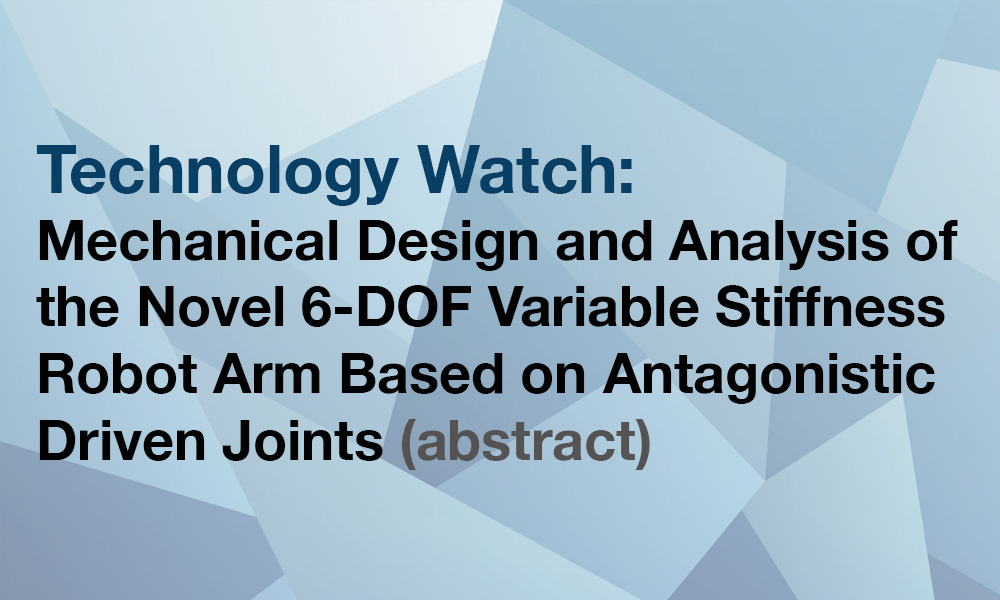Abstract:
This paper proposes four types of conceptual models of the 6-DOF variable stiffness robot arms based on the antagonistic driven joints (ADJs). For convenience of control, the equivalent quadratic torsion spring (EQTS) is selected as the elastic element of the ADJ. The relationship between the output stiffness and the angular displacement of the EQTS is fairly linear. The elastic actuating torque of the ADJ is related to the initial amount of deformation of the EQTS and the angular deflection of the ADJ. The output stiffness of the ADJ is a linear function of the initial amount of deformation of the EQTS. The convenience control of the torque and stiffness of the ADJ will be beneficial to reduce the complexity of the control strategy, and this feature is beneficial for real-time control. In the mechanical solutions, nine types of conceptual models of the EQTSs are presented, and nine types of conceptual models of the ADJs are demonstrated. The cam parameters and the spring parameters of the EQTSs are given. The cam profiles and the pressure angles of the cam-roller mechanisms are illustrated. The elastic actuating torque and output stiffness of the EQTSs and the ADJs are shown. The structure features and actuation characteristics of the EQTSs and the ADJs are compared and analyzed. Since the actuation requirements of the joints of the robot arm differ significantly, four types of conceptual models of the 6-DOF robot arms are assembled based on the different ADJs.

